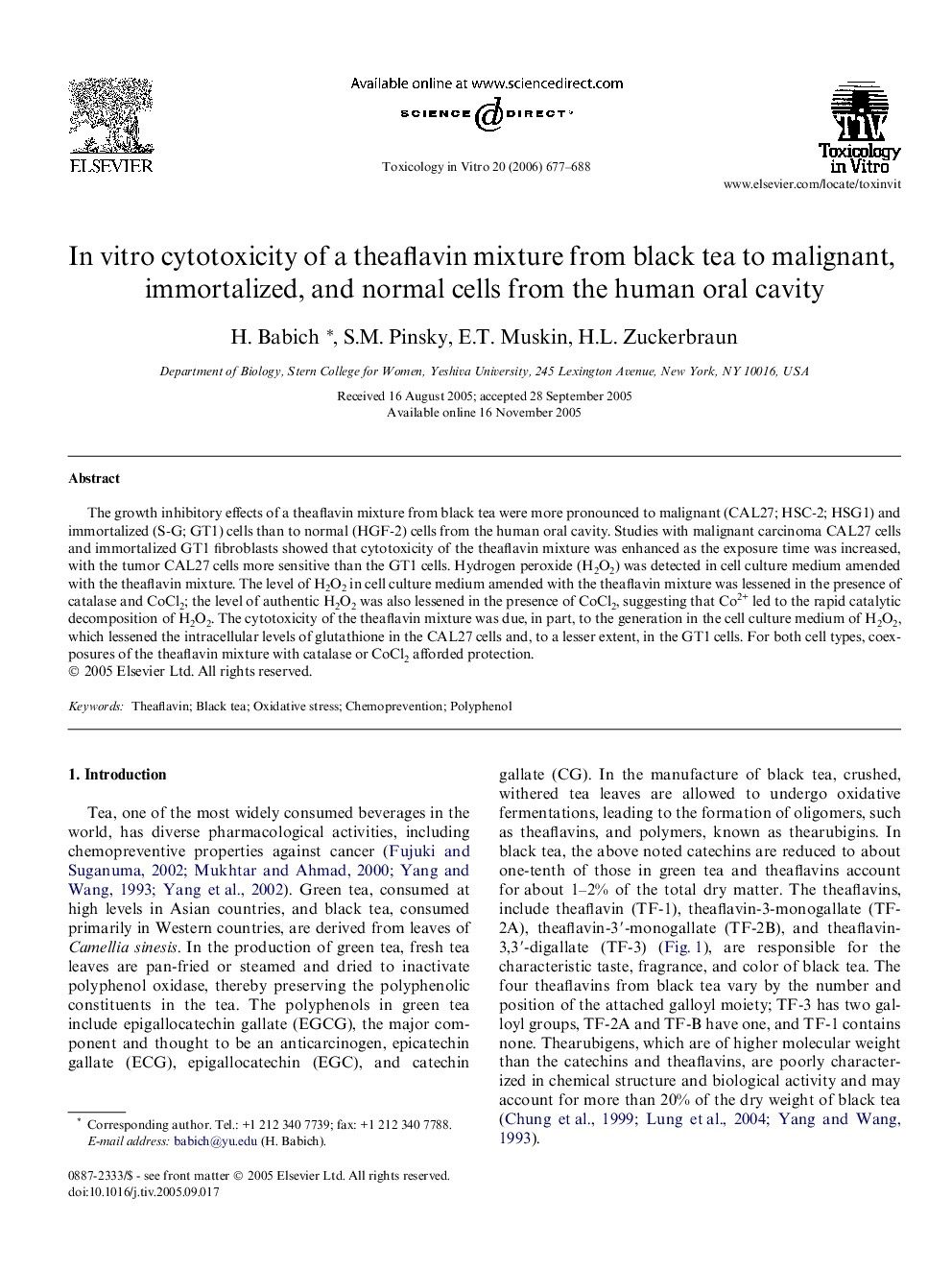| Article ID | Journal | Published Year | Pages | File Type |
|---|---|---|---|---|
| 2604005 | Toxicology in Vitro | 2006 | 12 Pages |
Abstract
The growth inhibitory effects of a theaflavin mixture from black tea were more pronounced to malignant (CAL27; HSC-2; HSG1) and immortalized (S-G; GT1) cells than to normal (HGF-2) cells from the human oral cavity. Studies with malignant carcinoma CAL27 cells and immortalized GT1 fibroblasts showed that cytotoxicity of the theaflavin mixture was enhanced as the exposure time was increased, with the tumor CAL27 cells more sensitive than the GT1 cells. Hydrogen peroxide (H2O2) was detected in cell culture medium amended with the theaflavin mixture. The level of H2O2 in cell culture medium amended with the theaflavin mixture was lessened in the presence of catalase and CoCl2; the level of authentic H2O2 was also lessened in the presence of CoCl2, suggesting that Co2+ led to the rapid catalytic decomposition of H2O2. The cytotoxicity of the theaflavin mixture was due, in part, to the generation in the cell culture medium of H2O2, which lessened the intracellular levels of glutathione in the CAL27 cells and, to a lesser extent, in the GT1 cells. For both cell types, coexposures of the theaflavin mixture with catalase or CoCl2 afforded protection.
Related Topics
Life Sciences
Environmental Science
Health, Toxicology and Mutagenesis
Authors
H. Babich, S.M. Pinsky, E.T. Muskin, H.L. Zuckerbraun,
